 The peripheral pollution surrounding what fitness and wellness should look like and how you get there is near epidemic status. The topic of high-intensity training receives the majority of the attention, with using Olympic lifts for conditioning a close second. And oh, what is “Insta-worthy” is atop the pollution charts as well. Okay, so that last one was a personal gripe more than based on empirical data. No matter; there are so many messages out there, many of them incorrect and downright unsafe, that it is hard to wade through the muck to get to the clear and beneficial information.
The peripheral pollution surrounding what fitness and wellness should look like and how you get there is near epidemic status. The topic of high-intensity training receives the majority of the attention, with using Olympic lifts for conditioning a close second. And oh, what is “Insta-worthy” is atop the pollution charts as well. Okay, so that last one was a personal gripe more than based on empirical data. No matter; there are so many messages out there, many of them incorrect and downright unsafe, that it is hard to wade through the muck to get to the clear and beneficial information.
The peripheral pollution surrounding what fitness and wellness should look like and how you get there is near epidemic status."
What I have come to appreciate more and more these days both professionally and personally is the concept of rest and recovery both during a training session and on subsequent days of the week. In my previous post, “This is 40”, I touched on how recovery is so important to get right as we age, but it is just as important for any age and fitness level. Rest and recovery do so much to help you reach your results, but they so often get forgotten due to the misguided messages out there saying that it has to be hard all the time no matter what. Here’s the thing: your immune system does not know the difference between disease and overtraining, which could leave you susceptible to a whole slew of infections. Not only are rest and recovery good for you physiologically, they can do wonders for your emotional self.
Here are three Rs to live by that will allow for the greatest training effect from the high-intensity work you are putting in at the gym, decrease the chance for injury and or illness, and hopefully increase the amount of SMILES you give to the world each day because you feel great!
Your immune system does not know the difference between disease and overtraining.”
Recover
Let’s look at recovery both during a training session as well as outside of a training day, shall we?
Training session: For higher-intensity training sessions, mind your work-to-rest ratio and aim for 1:2 or 1:1. Be wary about a laundry list of exercises to be performed for :45 work and :15 rest for multiple sets. There is not sufficient recovery time at the higher intensity loads, and before long most movements are not executed well, leading to poor results and maybe even injury. Physiologically, not allowing the system to return to a more normal state (or closer to it) can play havoc on the systems needed for the results you are seeking as well as keeping you alive. If you are not using time, heart rates or a simple talk test can be used to determine when it is appropriate to take on the next bout. A good rule of thumb is 110 to 120 beats per minute for your heart rate, or you can complete a couple of sentences in a row. Hard work pays off, but you have to be able to work hard each round and set. Ample time to recover will allow for that.
Off day: What do I do on my days off for recovery? See below. But, let us talk training schedule for maximum recovery results. As always, fitness IQ and fitness level will determine both the training schedule and loads; and there are many very thick books on that topic, which I am not trying to cover here. My hope is to provide a few basic, typical, rules of thumb. Again, for higher-intensity training sessions, here are a few sample weekly schedules:
- Beginner: 1 On, 1 Off
- Intermediate: 2 On, 1 Off
- Advanced: 3 On, 1 Off
These are very general ideas of what a training schedule could look like, and I would highly suggest that you let your body be your guide. Resting heart rate can be a key indicator of proper recovery and being training ready. If you wake up and you’re at 80bpm, you might want to recover that day. Build in those recovery days to help maximize your results.
“Hard work pays off, but you have to be able to work hard each round or set.”
Regenerate
Once again, let’s look at both training days and off days and what regeneration looks like for each.
Training session: Regeneration for a training session is made up of some drills that aid in elasticity of the soft tissues and prep the body for movement. This is typically completed before a training session but should also be done afterward as well to help aid in recovery and be ready for the next session. Elements found in regeneration are the following:
- Breathing techniques
- Foam rolling and trigger point drills
- Active mobility and range-of-motion drills
- Stability drills
Off day: Here is where we step away from the training stimulus and dig deeply into the regeneration of tissues and resetting energy levels through activities that encourage rehabilitation from training and focus on recentering yourself. The place to start is to get ample SLEEP! Enough said! If you are not getting 7 to 8 hours of restful sleep a night, consistently, reaching your goals will be an even tougher road.
Some other activities that will promote regeneration include the following:
- Massage
- Ice (my product of choice is HyperIce)
- Yoga
- Meditation
- Hot tubs
- Cryo-bath
Reflect
The third R should be reserved for reflecting on the week of training and life as a whole and should be an enjoyable training session. The session should emphasize play and nature. It should be an active session, but not nearly as intense as a training session (unless, of course, you play a sport for leisure). Mainly, take the time to be happy to be alive, spend time with the people you love, and do something you enjoy doing. Just as important to your health and well-being as the other two Rs, treat it as a mental-health day where you are being active. I don’t have a list here for you because you should do what moves you; but I highly recommend that it emphasize play, and that you connect with nature somehow.
I say again, hard work pays off, but you have to be able to work hard, and treat recovery as a training priority if you hope to get the most results from that hard work. These activities and days should be built into your training schedule, because it is still training, and a super-important aspect to the overall training plan. So there is rest for the wicked!

This blog was written by Tony Maloney, ACSM Certified Exercise Physiologist and Fitness Center Manager. To find out more about the NIFS bloggers, click here.
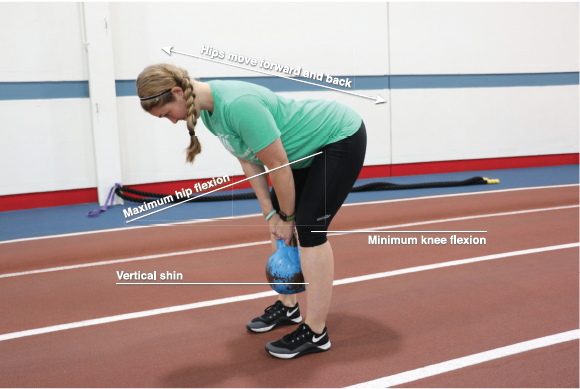
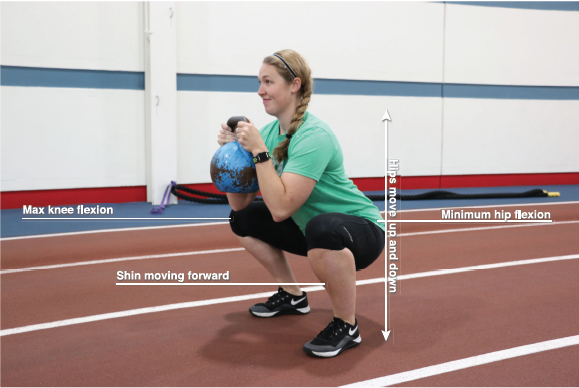


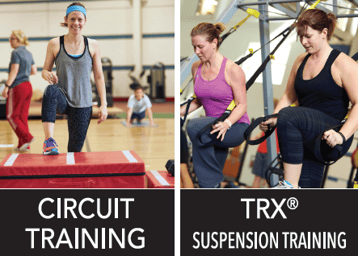 Group Fitness
Group Fitness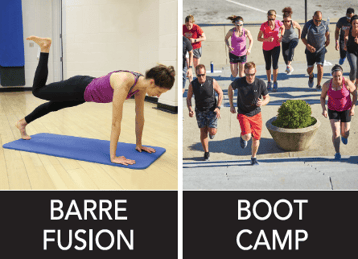 Specialty Classes are Included in NIFS Group Fitness Schedule
Specialty Classes are Included in NIFS Group Fitness Schedule 
 Throughout your life, you will come across times and situations that are tough, making you feel as though getting through it all is inconceivable and hopeless. There are more traditional ways to deal with these ups and downs of life, such as therapy, but there are other ways to overcome stress in life that can be as easy as taking a walk, shooting some basketball, or even lifting weights.
Throughout your life, you will come across times and situations that are tough, making you feel as though getting through it all is inconceivable and hopeless. There are more traditional ways to deal with these ups and downs of life, such as therapy, but there are other ways to overcome stress in life that can be as easy as taking a walk, shooting some basketball, or even lifting weights. The peripheral pollution surrounding what fitness and wellness should look like and how you get there is near epidemic status. The topic of high-intensity training receives the majority of the attention, with using Olympic lifts for conditioning a close second. And oh, what is “Insta-worthy” is atop the pollution charts as well. Okay, so that last one was a personal gripe more than based on empirical data. No matter; there are so many messages out there, many of them incorrect and downright unsafe, that it is hard to wade through the muck to get to the clear and beneficial information.
The peripheral pollution surrounding what fitness and wellness should look like and how you get there is near epidemic status. The topic of high-intensity training receives the majority of the attention, with using Olympic lifts for conditioning a close second. And oh, what is “Insta-worthy” is atop the pollution charts as well. Okay, so that last one was a personal gripe more than based on empirical data. No matter; there are so many messages out there, many of them incorrect and downright unsafe, that it is hard to wade through the muck to get to the clear and beneficial information.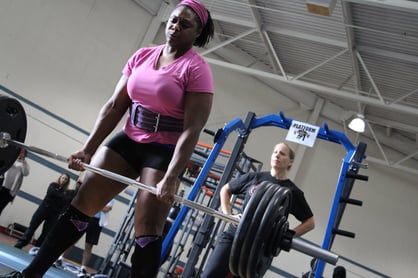 Weight-lifting belts have become a staple in many gym settings for powerlifting, Olympic lifting, bodybuilding, and strongman, and for anyone who wants to lift heavy loads. Whether you use them for training or on the competition platform, you need to know the ins and outs of weight belts so that you can make a smart decision.
Weight-lifting belts have become a staple in many gym settings for powerlifting, Olympic lifting, bodybuilding, and strongman, and for anyone who wants to lift heavy loads. Whether you use them for training or on the competition platform, you need to know the ins and outs of weight belts so that you can make a smart decision.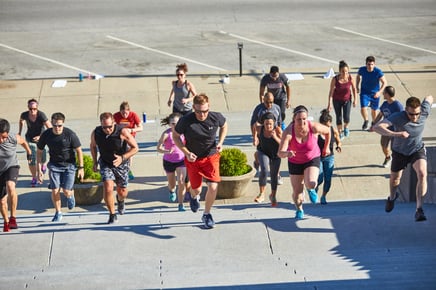 You either love them or you hate them… group workouts! In a world where technology is seemingly taking over the human connection and interaction, working out with a group can offer the opportunity to meet real friends instead of virtual ones online.
You either love them or you hate them… group workouts! In a world where technology is seemingly taking over the human connection and interaction, working out with a group can offer the opportunity to meet real friends instead of virtual ones online. There are so many diets out there that it can be confusing as to what you should follow and who you should listen to when it comes to healthy and balanced eating. If you aren’t sure where to begin to change your current routine, take a look at these tips that Registered Dietitians (the experts in healthy habits) recommend.
There are so many diets out there that it can be confusing as to what you should follow and who you should listen to when it comes to healthy and balanced eating. If you aren’t sure where to begin to change your current routine, take a look at these tips that Registered Dietitians (the experts in healthy habits) recommend.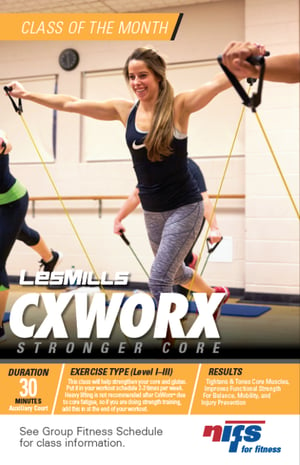 CXWORX
CXWORX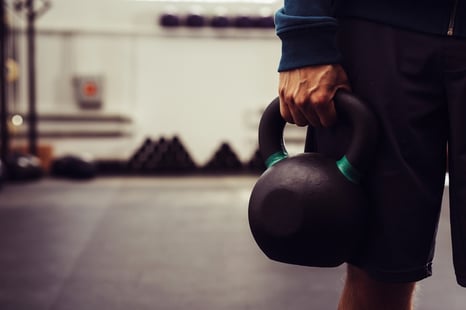 How long have you been stuck on your max for bench press or unable to become efficient at
How long have you been stuck on your max for bench press or unable to become efficient at  Fitness is a great tool to use to train the mind. Yes, often people work out for physical health, but exercise is also getting a lot of
Fitness is a great tool to use to train the mind. Yes, often people work out for physical health, but exercise is also getting a lot of